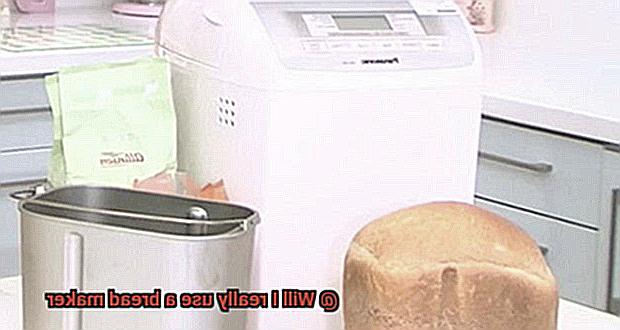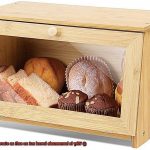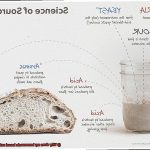Bread-making has been a staple skill for centuries, passed down through generations. It’s therapeutic and rewarding, but also time-consuming and messy. That’s where bread makers come in – machines designed to simplify the process with minimal effort and time.
But before you rush to buy one, ask yourself: will I really use it? A kitchen gadget gathering dust is not only a waste of money but also valuable counter space.
So, is owning a bread maker worth it? Let’s explore its benefits and whether it’s a worthwhile investment for avid bakers or beginners. We’ll examine the pros and cons of owning one and how to choose the right machine that aligns with your baking needs.
If you’re skeptical about its usefulness or on the fence about investing in one, stay tuned. We’ll break down everything you need to know to make an informed decision and determine whether a bread maker is worth the hype.
Contents [show]
What are the Benefits of a Bread Maker?
Look no further than a bread maker. This machine provides a variety of benefits, making it a worthwhile investment for any bread lover.
First and foremost, convenience is key. Gone are the days of spending hours in the kitchen, kneading and proofing dough. With a bread maker, simply add the ingredients and let the machine do the work. This is especially useful for busy individuals who want fresh bread without all the effort.
Not only is a bread maker convenient, but it also allows for healthier bread options. By controlling the ingredients, you can choose to use whole wheat flour instead of white flour or add seeds and nuts for added nutrition. Say goodbye to preservatives and additives found in store-bought bread.
In addition to health benefits, owning a bread maker can save you money in the long run. High-quality bread can be expensive, but with a bread maker, you can make it at home for a fraction of the cost. Plus, you have complete control over the ingredients and can customize your loaves to your liking.
Bread makers are also versatile machines that can make a variety of bread types, including white, whole wheat, rye, sourdough, and more. Some models even come with additional features like settings for making pizza dough or jam. The possibilities are endless.
Lastly, owning a bread maker allows for complete customization. Adjust the crust color, loaf size, and add different flavors and ingredients to create unique and delicious bread every time. Share your creations with loved ones and enjoy the satisfaction of baking your own bread.
Do You Enjoy Baking?
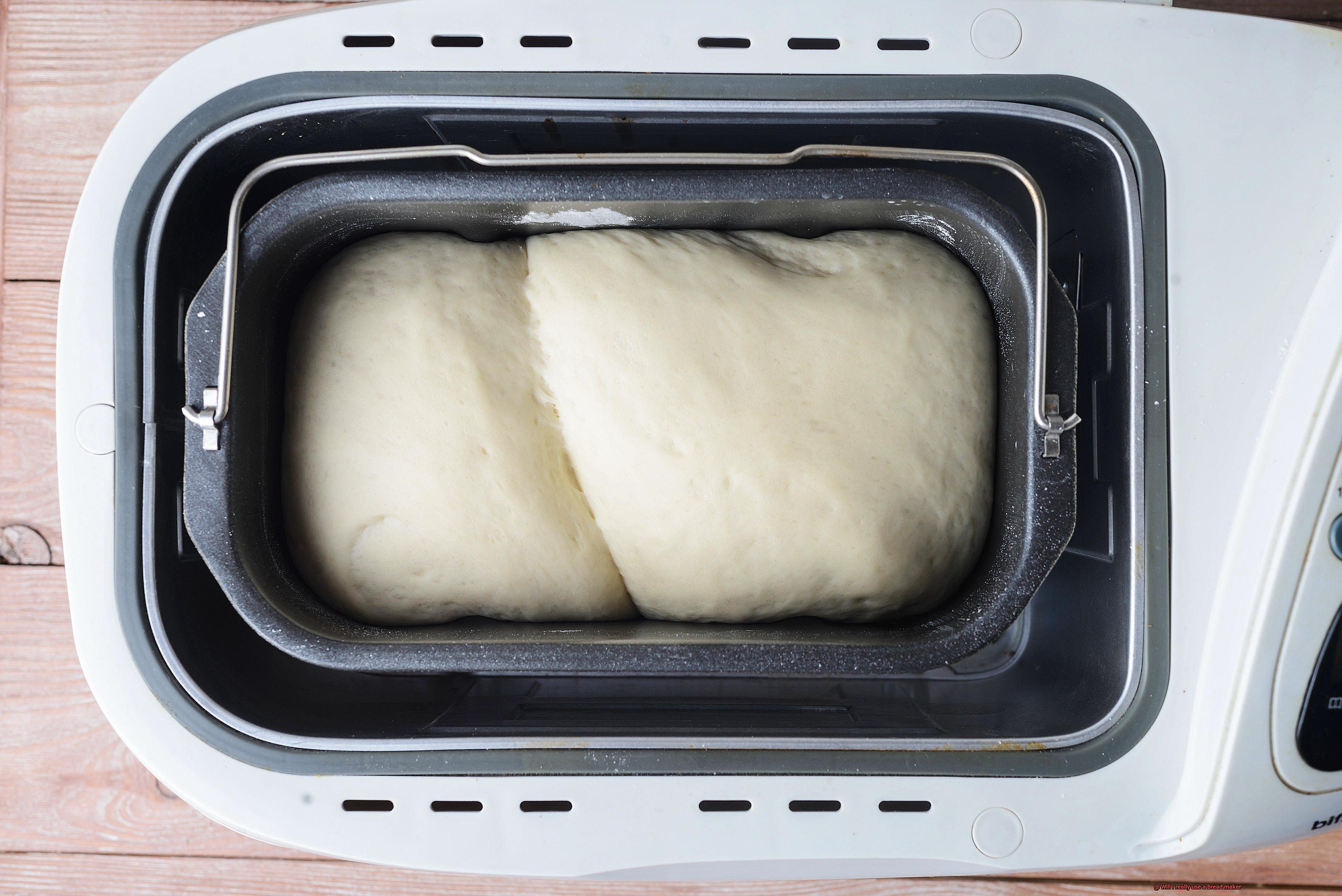
A bread maker may not be necessary for you. But if you love the idea of freshly baked bread without the tedious and time-consuming process of making it by hand, a bread maker could be a game-changer.
Let’s delve deeper into key factors to consider when deciding whether or not to invest in a bread maker:
- Baking Frequency – Do you crave the taste and aroma of fresh bread often? If so, investing in a bread maker can save you time and effort in the long run. However, if bread baking is just an occasional hobby for you, then it may not be worth the investment.
- Bread Types – Are you a bread connoisseur who loves to experiment with unique ingredients and recipes? While bread makers are great for basic white and wheat bread, they might not be as versatile when it comes to more complex or specialty breads. If you’re looking for more creativity and flexibility in your baking, then a bread maker might not be the best option.
- Convenience – Are you seeking an easy and convenient way to enjoy fresh homemade bread every day? Investing in a bread maker can provide you with customization options that will leave your taste buds dancing with joy. Plus, it offers health benefits, cost savings, versatility, and convenience all in one.
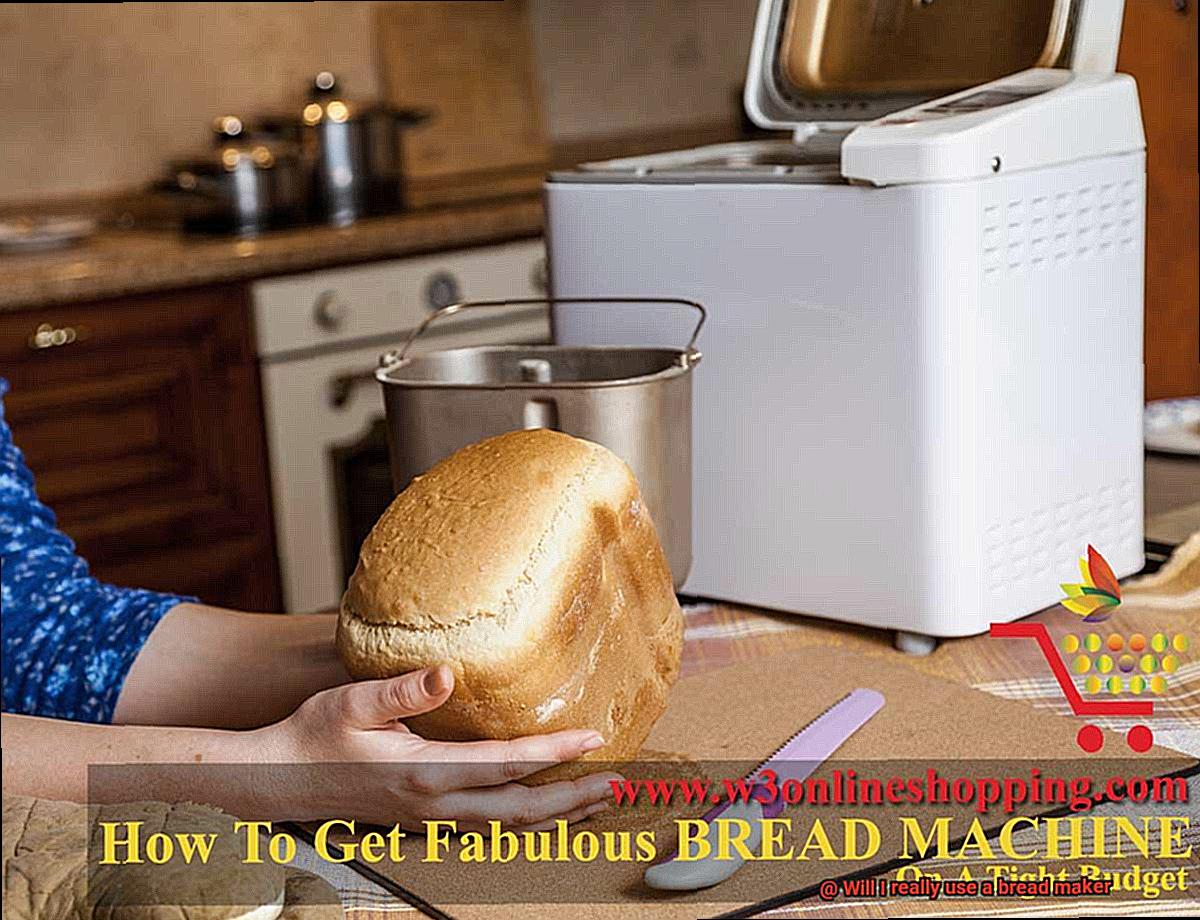
Is Homemade Bread Better than Store-Bought?
Let’s explore the differences between homemade and store-bought bread to help answer the age-old question: Is Homemade Bread Better than Store-Bought?
One of the most significant advantages of making your own bread is the ability to control the ingredients. With homemade bread, you can choose high-quality flour, natural sweeteners, and wholesome add-ins like herbs or nuts. This means that you can avoid the preservatives and additives commonly found in store-bought bread. Plus, experimenting with different types of flour and add-ins can lead to a unique and delicious loaf.
Freshness is another advantage of homemade bread. Store-bought bread can sit on shelves for days or even weeks before it reaches your kitchen. Homemade bread, on the other hand, is typically consumed within a day or two of being baked. This means that it’s less likely to go stale or develop mold, ensuring that every bite is fresh and satisfying.
Texture plays a significant role in the differences between homemade and store-bought bread. Homemade bread tends to have a denser texture and chewier crust, while store-bought bread is often lighter and fluffier. The thicker and more flavorful crust of homemade bread also adds a delightful crunch, elevating the overall eating experience.
Finally, there’s the taste factor. Homemade bread can have a more complex and satisfying flavor profile than store-bought bread. With complete control over the ingredients, you can experiment with different types of flour, yeast, and flavorings to create a loaf that suits your tastes perfectly. The result is a deliciously satisfying flavor that will leave you wanting more.
Consider Your Lifestyle and Preferences
Perhaps it’s time to consider investing in a bread maker. However, before you dive headfirst into purchasing this handy appliance, take a moment to consider your lifestyle and preferences. After all, not everyone needs a bread maker in their kitchen.
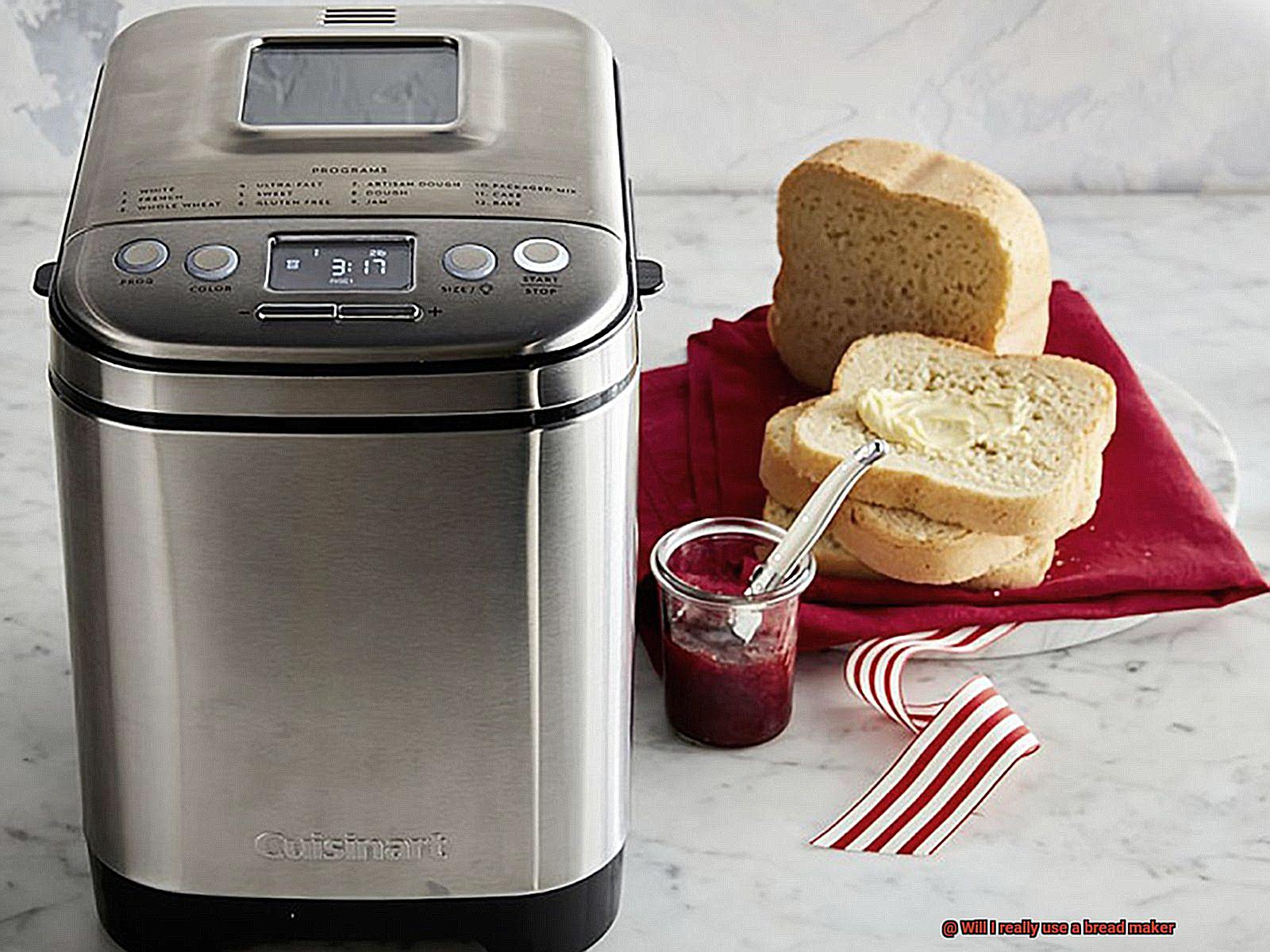
First and foremost, think about your schedule. If you lead a busy lifestyle with little time to spare, a bread maker can be a true lifesaver. Picture this: simply add the ingredients, set the timer, and let the machine do its thing while you go about your day. This can save you valuable time and energy, allowing you to enjoy fresh bread without spending hours in the kitchen. Plus, who doesn’t love coming home from work to the smell of freshly baked bread?
On the other hand, if you enjoy the process of baking bread from scratch and have the time to do so, a bread maker may not be necessary. Many people find kneading dough and watching it rise to be therapeutic and enjoyable. If this sounds like you, then perhaps investing in a bread maker isn’t worth it. There’s something special about getting your hands dirty and creating a masterpiece from scratch.
Another important factor to consider is your dietary preferences. If you have specific dietary restrictions or preferences (such as gluten-free or vegan diets), a bread maker can be an excellent investment. You can control the ingredients and tailor your bread specifically to your needs. This can be especially helpful if you find it challenging to find suitable bread options at your local grocery store. Plus, nothing beats the taste of homemade bread made with wholesome ingredients.
Lastly, think about how often you eat bread. If you’re an occasional bread eater, it may not be worth the investment in a bread maker. However, if you’re someone who loves their daily dose of carbs, a bread maker can save you money in the long run. Homemade bread is often less expensive than store-bought bread, and with a bread maker, you can make fresh bread whenever you want without having to constantly buy it from the store.
What Kind of Bread Maker Should You Buy?
A bread maker can be a game-changer for those who want to enjoy the aroma and taste of freshly baked bread without the hassle. However, with so many options on the market, how do you choose the right one for your needs? As an expert in this field, I have compiled some research notes to help guide you through the process.
Firstly, consider the type of bread you want to make. Do you want a traditional-looking loaf or something more artisanal? Horizontal bread makers are great for those who want a classic rectangular loaf, while vertical bread makers produce a rounder, rustic loaf that looks like it came from a bakery.
Next, think about the size of the bread maker. If you have a small household or don’t eat a lot of bread, a 1-pound machine may be sufficient. However, if you plan on baking regularly or have a larger family, a 2-pound machine may be a better choice.
Another important factor is the number of settings the bread maker has. Most machines come with basic settings for white and wheat bread, but if you have specific dietary preferences like gluten-free or sourdough, make sure to find a machine with those settings. Additionally, some machines also have settings for making jam or yogurt.
Furthermore, look for a bread maker with multiple settings, which allows you to experiment with different recipes and make a wider variety of bread. Some advanced models have additional settings for French bread, whole-grain bread, and even pizza dough.
Lastly, consider your budget when making your purchase. While it may be tempting to go for a cheaper option, keep in mind that quality and consistency may suffer. A mid-range machine is usually an excellent choice for most home bakers.
Tips for Making the Best Homemade Bread
Making homemade bread is a satisfying endeavor that can be both fun and delicious. However, even experienced bakers can have trouble getting their loaves to turn out perfectly. Here are some tips and tricks to help you make the best homemade bread possible.
Use High-Quality Ingredients
The first step to making delicious homemade bread is to use high-quality ingredients. While it may be tempting to use whatever flour or yeast you have on hand, using fresh and high-quality ingredients will make a big difference in the flavor and texture of your bread.
When choosing flour, look for bread flour with a high protein content. This will give your bread the structure it needs to rise properly. For yeast, use active dry yeast or instant yeast. And don’t forget the salt – it helps to enhance the flavor of the bread.
Knead Properly
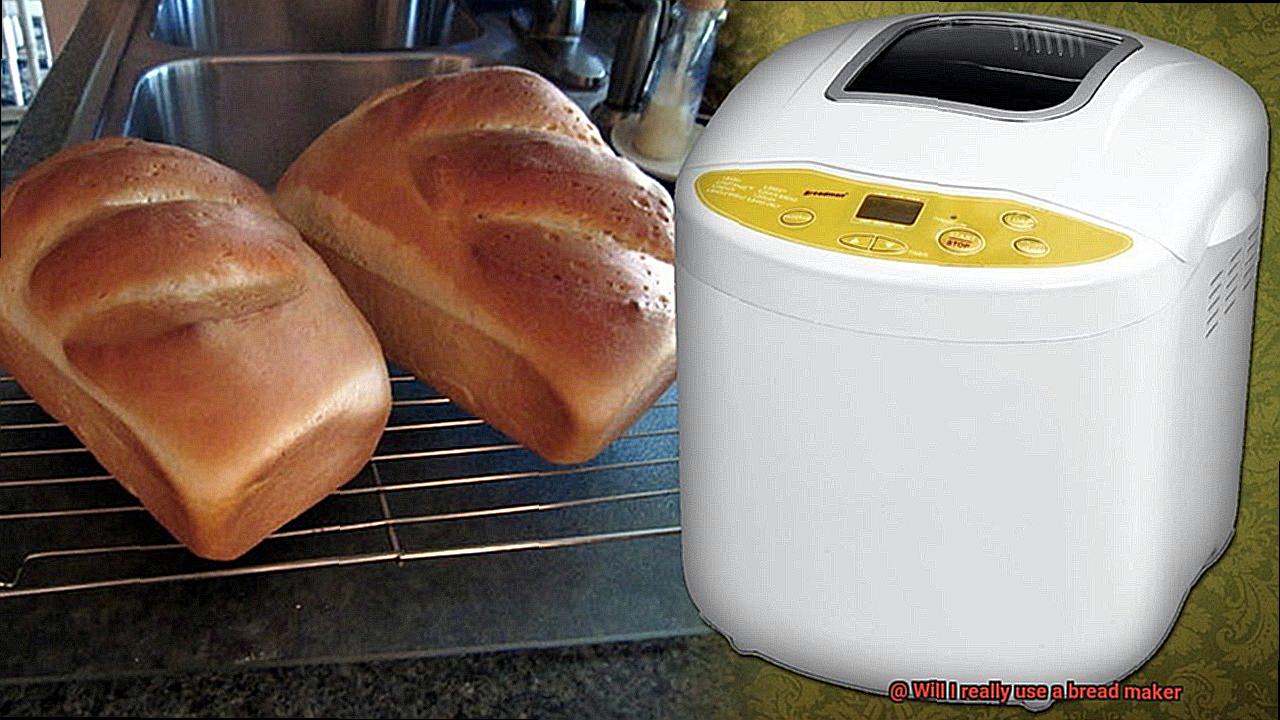
Kneading is an important step in making bread as it helps to develop the gluten in the dough, which gives the bread its structure and texture. You should knead the dough for at least 10 minutes, or until it becomes smooth and elastic.
If you’re kneading by hand, use a light touch and fold the dough over onto itself. If using a stand mixer with a dough hook attachment, keep an eye on the dough to avoid over-kneading.
Let the Dough Rise Properly
Letting the dough rise properly is also crucial for making the best homemade bread. You should let the dough rise in a warm, draft-free place until it doubles in size. This allows the yeast to ferment and produce carbon dioxide, which makes the bread rise.
Aim for a warm temperature between 75-80°F for optimal rising conditions. Covering the dough with plastic wrap or a damp towel will help create a humid environment for rising.
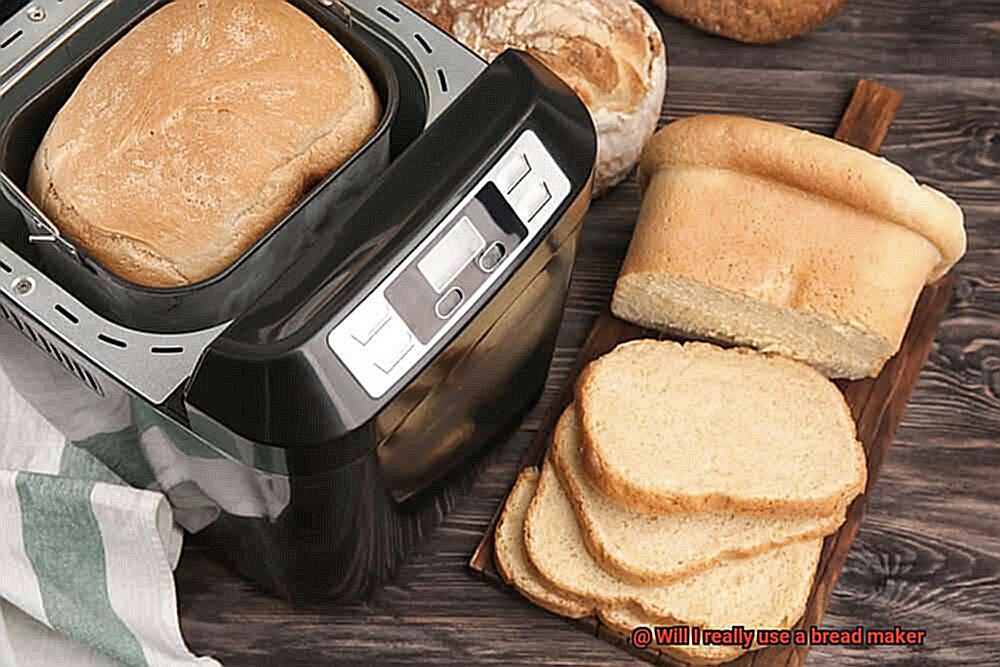
Bake at the Right Temperature
Baking at the right temperature is key to achieving a delicious crust and soft interior. Preheat your oven to the correct temperature before baking, and use a baking stone or other baking vessel to create a crusty exterior.
Aim for a baking temperature between 375-425°F, depending on the recipe. Use a food thermometer to ensure that the internal temperature of the bread reaches at least 190°F before removing from the oven.
Let the Bread Cool Completely
Once your bread is out of the oven, resist the urge to slice into it right away. Letting the bread cool completely before slicing allows the crumb to set properly and ensures that your bread slices cleanly without crumbling.
Cool your bread on a wire rack for at least an hour before slicing. This will also help prevent moisture from building up inside the loaf and making it soggy.
Common Mistakes to Avoid When Using a Bread Maker
If you’re a fan of homemade bread, a bread maker can be a game-changer. However, even experienced bakers can make mistakes that can ruin their bread or their machine. To ensure that your bread turns out perfectly every time, it’s important to avoid these common mistakes when using a bread maker.
First on the list is measuring ingredients correctly. Don’t guess or use measuring cups that aren’t accurate. Follow the recipe precisely and measure each ingredient carefully to avoid disappointment.
Secondly, not adding ingredients in the correct order can affect how well your bread rises and how it tastes in the end. Make sure to follow the instructions for your specific bread maker to ensure that you’re adding ingredients in the right order.
During the mixing process, it’s essential to keep an eye on the dough. If it isn’t forming a ball or is sticking to the sides of the machine, you may need to add more flour or water to adjust its consistency. This will help ensure that your bread turns out perfectly every time.
Finally, don’t forget to clean your bread maker after each use. Neglecting to do so can cause buildup and even mold growth over time. Follow the manufacturer’s instructions to clean your machine thoroughly after each use to prolong its life and keep your bread fresh and delicious.
To summarize, here are some key takeaways:
- Measure ingredients precisely.
- Add ingredients in the correct order.
- Check on dough during the mixing process and adjust consistency as needed.
- Clean your machine after each use.
How to Clean and Maintain Your Bread Maker
If you own a bread maker, then it’s important to know how to clean and maintain it properly. Not only does this ensure your machine lasts for a long time, but it also keeps your bread tasting fresh and delicious every time. Here are five sub-sections that will help you keep your bread maker in tip-top shape:
Clean the Bread Pan After Every Use
After baking bread, make sure to remove the bread pan from the machine and wash it with warm, soapy water. Rinse it thoroughly and dry it completely before placing it back into the machine. This prevents leftover crumbs or residue from building up and affecting the taste of your next loaf.
Wipe Down the Exterior of the Machine
Using a damp cloth, wipe down the exterior of the machine after each use. Avoid using abrasive cleaners or harsh chemicals, as they can damage the surface of your machine. For tough stains or buildup, use a mixture of baking soda and water to gently scrub away any residue.
Clean the Kneading Blade
The kneading blade can become caked with dough over time, so it’s important to regularly clean it. Soak it in warm, soapy water for a few minutes before scrubbing away any remaining dough with a soft-bristled brush.
Refer to Your User Manual for Maintenance Instructions
Different bread makers may require different types of maintenance, so be sure to check your user manual for specific instructions on how to care for your machine. Some models may require regular oiling of moving parts, while others may need to be descaled periodically.
Keep Your Machine Free from Flour and Dough
Make sure to keep your machine free from any excess flour or dough that may have spilled over during use. This will prevent any buildup that could affect the performance of your machine over time.
h1_UehPO8qc” >
Conclusion
In conclusion, a bread maker is an excellent investment for those who enjoy homemade bread. It offers convenience, health benefits, cost savings, versatility, and customization options. However, before you make the purchase, it’s crucial to consider your baking frequency, bread type preference, convenience needs, and dietary restrictions.
The advantages of homemade bread over store-bought bread are numerous. You have control over the ingredients used and can achieve freshness and taste that cannot be replicated by commercial bakeries. To choose the right bread maker machine for your needs, consider factors such as the type of bread you want to make, size of the machine, number of settings available for different recipes and features like jam or yogurt making settings.
To make the best homemade bread possible with your bread maker machine, use high-quality ingredients like fresh flour and yeast; knead properly; let the dough rise correctly in a warm place; bake at the right temperature using a baking stone or other vessel for crusty exterior; and let the bread cool completely before slicing.
Cleaning and maintaining your bread maker is also essential to prolonging its life span. Clean the pan after every use with warm soapy water; wipe down the exterior with a damp cloth; clean kneading blade regularly; refer to user manual for maintenance instructions; keep machine free from flour and dough residue.
With these tips in mind, you’ll be able to enjoy delicious homemade bread without all the effort.

